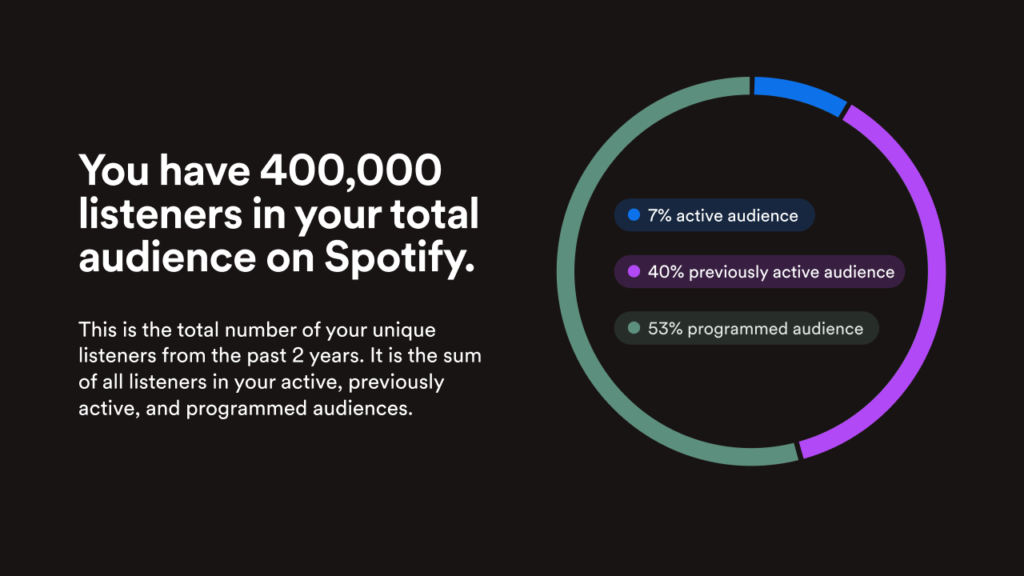Learn information such as how often your audience are listening to your music, and how they’re choosing to stream it with Spotify audience segmentation data.
As a music artist, it’s important you understand your audience. They’re the driving force behind your career. Knowing their habits could help you get more from them, because you can work with them. If you know where your audience are based, or what times they’re most active, you could potentially tailor your release times to them.
The information provided by those at Spotify for Artists is important to any artist. Learn who listens to your tracks and how they choose to listen. By following the new audience segments, you could potentially expand your audience and gain a better relationship with the audience you currently have. Before now, data has focused on total numbers.
This is total streams, total monthly listeners, and also total followers. All of this would be combined to display how you’re performing overall. Spotify have said “While those data points are important, they lack nuance”. You’re not able to learn enough to compare your top fans to people who have listened to your track once, potentially not even all the way through.
Knowing how your most active audience stream your tracks is important because you’ll have that device type in mind moving forward. You’ll also be able to see where your streams are most likely to come from. If your listeners are consistent at the moment, you’ll find your streams will likely increase even more over the next few months.
Spotify segments tab
Within your new Segments tab, you’ll be able to see your total audience. This will replace the previous active audience tab. You’ll also be able to see any unique listeners from the past two years which includes those who are active and two other features: previously active audience and programmed audience. This will show you a better insight into your audience.
Previously active
This refers to listeners who were active previously. Within the past two years they will have been active listeners however, recently, in the past 28 days, have not streamed your music.
Programmed audience
Any listeners who haven’t streamed your content by choice in the last two years will fall into this. By choice refers to a user searching for you or your song to listen to it. They have however streamed your track through programmed sources: editorial playlists, personalised playlisted, radio, or autoplay.
Active audience
This refers to listeners who have streamed your music in the past 28 days, through active sources. These sources could be from your artist profile, an album, release page, or their own library and playlists. Typically, your active audience will make up 33% of your total audience. They will also often be around 60% of your streams and also 80% of your merchandise sales. So, it’s important to know who they are and appeal to them.
Super listeners
Your die hard fans. Those who are dedicated to listening to your music will fall into this category. They’re most likely to continue listening, and share your music.
Moderate listeners
Any active listeners who have streamed your music in the past 28 days out of choice. They have intentionally listened to your tracks. They’re not quite as engaged as any frequent listeners, but they could become a super listener.
Light listeners
Those that fall into this category are anyone who has intentionally streamed your music at least once in the past 28 days. They may creep into moderate listeners, but they are far from super listeners.
By knowing how you’re performing in each category you’ll be able to see how you can improve to expand your audience. What areas are you doing well in, and what areas are you not? Who is streaming your music often? You want to continue to appeal to them while also trying to convert those who are moderate listeners into super listeners.




